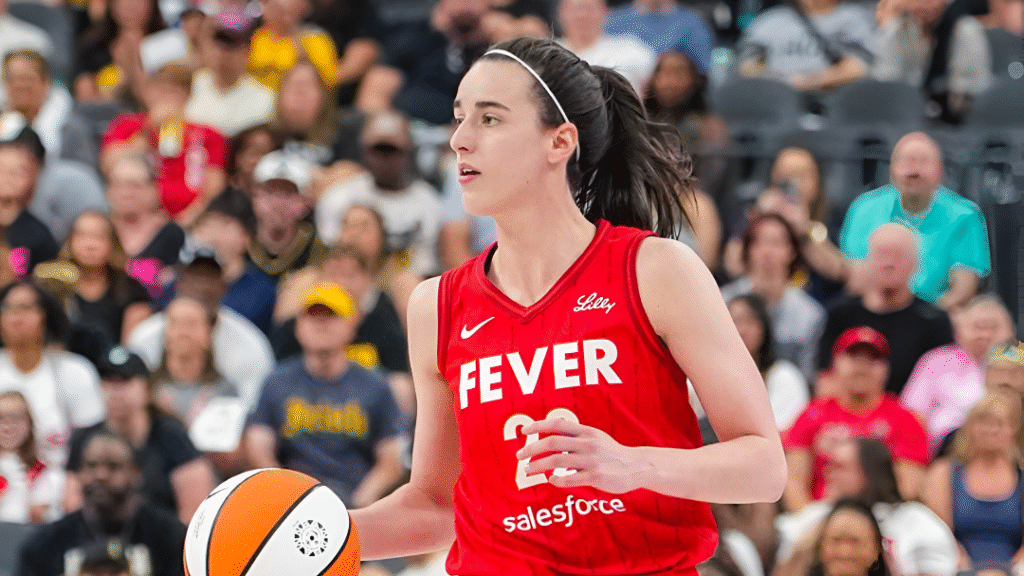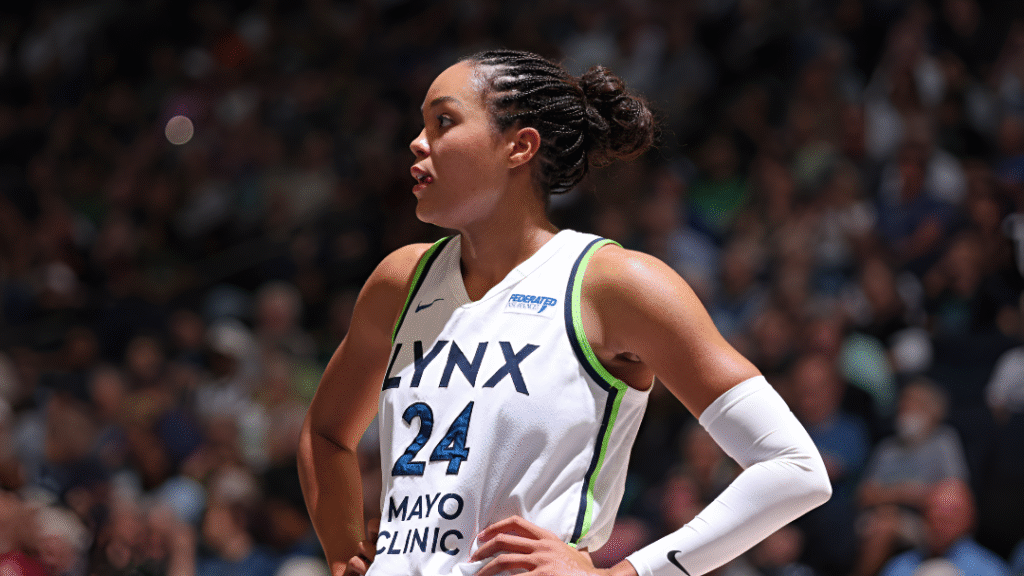The Caitlin Clark foul controversy has sent shockwaves across the WNBA and sports world. What really happened? Why is everyone talking about this one play? Discover the truth, the backlash, and what it means for the future of women’s basketball in this must-read breakdown.
Caitlin Clark Foul Controversy: Why Everyone’s Talking About That One Play
If you’ve been anywhere near a sports news feed in the past few days, you’ve probably heard about that moment—the Caitlin Clark foul that’s stirred up a whirlwind of reactions across social media, news outlets, and even political circles. The buzz isn’t just about a single play on the court—it’s about what it says regarding officiating, player safety, and the way rising stars like Clark are treated in the professional sports arena.
So, what really happened? Why is everyone so riled up? And what does this mean for the future of women’s basketball?
Let’s unpack the chaos, the controversy, and the bigger picture.
What Sparked the Caitlin Clark Foul Debate?
During a high-stakes WNBA game between the Indiana Fever and the Chicago Sky, Caitlin Clark, the No. 1 overall draft pick and one of the most talked-about rookies in years, was the target of a hard foul by Chennedy Carter. The incident occurred just before an inbound play when Carter body-checked Clark, sending her crashing to the floor without the ball even being in play.
Initially, the foul wasn’t even reviewed. But after mounting public pressure and an outcry from analysts and fans alike, the WNBA upgraded the foul to a flagrant-1, days after the game had already concluded.
That’s when the real drama began.
The Internet Erupted: Fans, Celebs, and Even Politicians Weighed In
The Caitlin Clark foul wasn’t just a trending topic—it became a national conversation.
You had ESPN anchors dissecting it frame by frame. Former athletes calling it “dirty” and “intentional.” Fans and influencers posted slow-motion replays and hot takes that garnered millions of views.
Even politicians like Indiana’s Governor Eric Holcomb and others chimed in, demanding better protection for players like Clark. On the flip side, some argued that Clark was simply getting a “welcome to the league” message and needed to toughen up. Suddenly, this wasn’t just about a play—it was about culture, gender, race, and the visibility of women in pro sports.
The Foul vs. The Flag: Was It Really That Bad?
Let’s talk facts. The WNBA eventually ruled the Caitlin Clark foul a flagrant-1, meaning it was “unnecessary” but not “excessive.” But for many watching the replay, it sure looked excessive. No attempt at the ball. No basketball play involved. Just a straight shoulder to the body.
Here’s where it gets more complicated. Clark herself played it cool. In the post-game presser, she shrugged it off and said, “It is what it is.” But her coach and teammates weren’t so diplomatic. They called out the league’s inconsistency in officiating and its failure to protect star players.
You’ve got to wonder—if this was LeBron James or Steph Curry, would the call have gone the same way?
The Rookie Treatment or Something Deeper?
Many argue that Clark is just experiencing what rookies always face—a kind of on-court hazing. But let’s be real: this is Caitlin Clark we’re talking about. She’s not your average rookie. She’s brought a surge of attention, ratings, and ticket sales to the WNBA.
Some fans believe there’s jealousy involved. Clark’s popularity is off the charts, and not everyone loves the attention she’s getting. That’s where the debate gets murkier. Is the aggression she’s facing on the court about basketball—or something more personal?
Media Double Standards and Racial Undertones?
Like it or not, the Caitlin Clark foul controversy has also sparked uncomfortable but necessary conversations around race and media narratives. Some critics point out that when Clark is fouled or taunted, it gets framed as bullying. But when other players—especially Black players—face similar treatment, it’s “just part of the game.”
Are we holding different players to different standards based on their race or popularity? It’s a question that’s been simmering beneath the surface of sports media for years, and this incident poured gasoline on that fire.
The League’s Response: Too Late or Just in Time?
The WNBA’s delayed response didn’t help. By the time the foul was upgraded, the headlines had already exploded. Critics slammed the league for waiting too long and for failing to protect one of its most valuable assets.
In contrast, fans applauded Clark’s calm demeanor, saying it showed poise under pressure. But still—shouldn’t a player like her be shielded more effectively from such incidents?
It’s clear that the WNBA has some soul-searching to do—not just about officiating, but about how it protects its rising stars.
Clark’s Rising Star Power Isn’t Slowing Down
Despite the hard hits, Caitlin Clark’s momentum hasn’t slowed. If anything, the foul made her even more of a household name. She’s still selling out arenas, putting up solid numbers, and drawing more eyeballs to the WNBA than ever before.
The incident might’ve bruised her body, but it certainly didn’t bruise her brand.
Clark continues to handle the scrutiny with grace, giving measured answers and letting her game do the talking. That quiet confidence is winning her even more fans—and proving that she’s not just a viral sensation but a long-term force.
So, What Does This Mean for the WNBA?
This whole foul drama has cracked open a bigger dialogue about how the WNBA treats its rookies, markets its stars, and enforces fairness on the court. If the league wants to keep building momentum, it’s going to have to evolve—and fast.
Better officiating. Consistent penalties. More transparency. And maybe most importantly, equal treatment for all players, no matter their background or fanbase.
Because if the league can’t protect Caitlin Clark, what message does that send to other aspiring stars?
Conclusion: The Caitlin Clark Foul Was More Than Just a Play
The Caitlin Clark foul wasn’t just a collision between two players—it was a collision between expectations and reality, between hype and hostility, between fairness and favoritism.
Yes, it was one moment in one game. But the ripple effects are still being felt. It sparked debate, forced reflection, and pulled back the curtain on the challenges female athletes still face—even in 2025.
Whether you’re Team Clark, Team Carter, or just a fan of the game, one thing’s clear: this controversy has left a mark. And the conversation? It’s far from over.
FAQs
Q1: Why was Caitlin Clark fouled so hard during the game?
A1: Many believe the foul was intentional, possibly due to jealousy, rookie hazing, or frustration over Clark’s media attention. It was ruled a flagrant-1 by the WNBA.
Q2: What did Caitlin Clark say about the foul?
A2: Clark downplayed the incident, saying, “It is what it is.” She remained composed and avoided blaming Carter publicly.
Q3: Was the foul punished immediately during the game?
A3: No, the referees did not call it a flagrant during the game. It was only upgraded to a flagrant-1 after public backlash and further review.
Q4: Has this affected Clark’s popularity or game performance?
A4: Not at all. If anything, it’s increased her visibility. She continues to be a top draw in the WNBA and is performing well on the court.
Q5: What’s next for the WNBA after this controversy?
A5: The league may face pressure to improve officiating standards, ensure player safety, and address the way media narratives are shaped around different athletes.
Also Read: Latest Trending News


